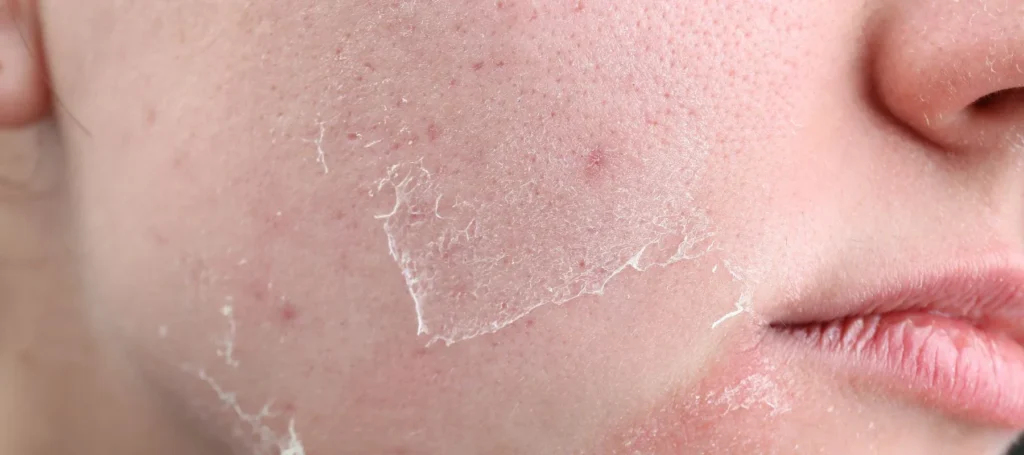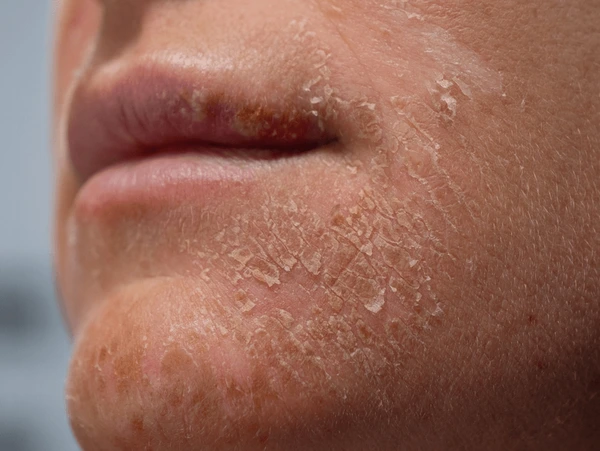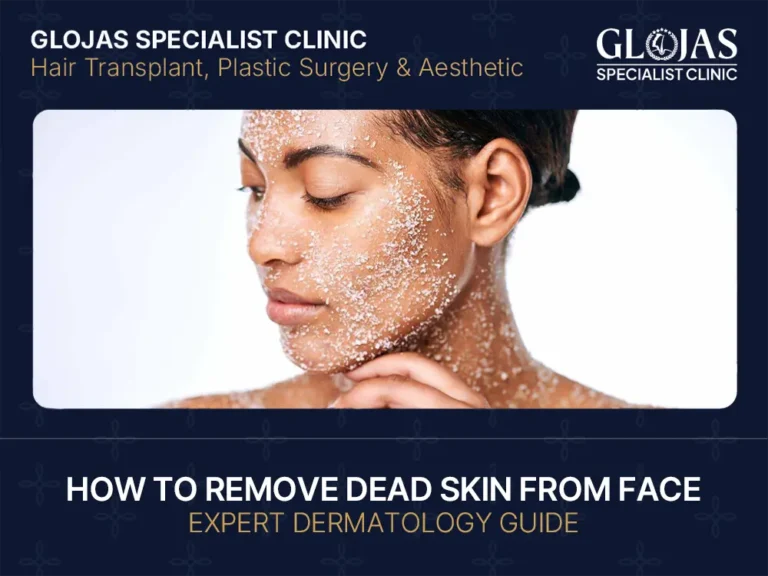Dead skin buildup can leave your face looking dull, flaky, and aged. Without proper exfoliation, these dead skin cells clog pores, cause breakouts, and reduce the effectiveness of skincare products. This guide outlines safe and effective methods to remove dead skin from the face, whether you’re using at-home treatments or professional clinic options.
1. Understanding the Causes of Dead Skin on the Face

The skin naturally renews itself every 28 to 40 days. New skin cells form in the basal layer and gradually rise to the surface, where they die and are shed. However, this process can be disrupted by external factors, leading to a buildup of dead skin that dulls the complexion.
Common causes include:
Dehydration and poor skin barrier function
Lack of regular exfoliation
Aging, which slows cell turnover
Sun damage and environmental stressors
Overuse of harsh products or cleansers
This buildup often appears as rough texture, patchy dryness, or uneven tone, and it interferes with proper product absorption.
2. How to Safely Remove Dead Skin from the Face

There are two main ways to remove dead skin: at-home exfoliation and professional treatments. Both methods serve to accelerate natural skin renewal while improving texture and tone.
A. At-Home Exfoliation Methods
Physical Exfoliants (Scrubs):
These contain small particles such as sugar, rice powder, or jojoba beads to manually buff away surface-level dead skin. They should be used 1–2 times a week and applied gently to avoid microtears.
Chemical Exfoliants (AHAs and BHAs):
These use mild acids to dissolve the bonds between dead skin cells.
Alpha Hydroxy Acids (AHAs): Glycolic acid and lactic acid are effective for dry and dull skin.
Beta Hydroxy Acids (BHAs): Salicylic acid is suitable for oily and acne-prone skin as it penetrates deeper into the pores.
Enzyme Exfoliants:
Derived from natural sources like papaya or pineapple, enzymes gently break down dead skin without irritation. These are ideal for sensitive skin types.
Important Tips for Home Use:
Always follow exfoliation with a moisturizer
Limit exfoliation to 2–3 times per week
Apply sunscreen daily, as exfoliated skin is more sun-sensitive
B. Clinical Treatments for Deeper Exfoliation
For individuals with persistent roughness, acne scars, or pigmentation, in-clinic procedures offer controlled and more effective skin resurfacing.
Microdermabrasion:
A mechanical method using fine crystals or diamond tips to exfoliate the outermost skin layer. Ideal for treating dullness and fine textural concerns.
Chemical Peels:
These use professional-grade acids to remove multiple layers of skin depending on depth. Peels can treat pigmentation, acne scars, and aging signs.
Laser Exfoliation (e.g., Pico Laser or CO2 Fractional):
Removes dead cells and stimulates collagen production. These treatments offer long-term improvements in skin clarity and elasticity.
Hydrafacial:
Combines cleansing, exfoliation, and hydration in one treatment. It’s gentle, non-invasive, and suitable for all skin types with no downtime.
3. How to Prevent Excess Dead Skin Buildup
Maintaining a proper skincare routine not only removes dead skin but also prevents buildup in the first place.
Use a gentle cleanser that doesn’t strip the skin
Moisturize daily to support healthy skin turnover
Protect your skin from UV rays with sunscreen
Maintain hydration through diet and water intake
Avoid using harsh soaps or over-washing
A regular exfoliation schedule, tailored to your skin type, can significantly improve overall skin texture and tone over time.
Frequently Asked Questions (FAQs) – Skin Dead Removal
1. How often should I exfoliate to remove dead skin from my face?
For most skin types, 2–3 times a week is sufficient. Sensitive skin may only tolerate exfoliation once per week.
2. Can I use a towel or sponge to remove dead skin?
A soft washcloth can help with gentle exfoliation, especially when used with a cleanser. Avoid rough tools like loofahs, which can damage facial skin.
3. What is the best exfoliant for removing dead skin on the face?
Chemical exfoliants like glycolic acid or salicylic acid are highly effective. Choose based on your skin type and concerns.
4. Is exfoliation safe for acne-prone skin?
Yes, but opt for chemical exfoliants like salicylic acid. Avoid physical scrubs which can irritate inflamed skin.
5. Should I go to a clinic for dead skin removal?
If you have persistent dullness, scarring, or texture issues, clinical treatments like chemical peels or Hydrafacial offer deeper, more effective results.
Conclusion
Removing dead skin is essential for maintaining smooth, radiant, and healthy skin. Whether you choose gentle at-home exfoliation or advanced clinical procedures, consistency and proper aftercare are key.
If you’re looking for medically supervised treatments to remove dead skin from your face, GLOJAS Specialist Clinic in Kuala Lumpur offers certified dermatological solutions, including microdermabrasion, chemical peels, and laser therapy. Book a consultation today to restore your skin’s natural glow.
